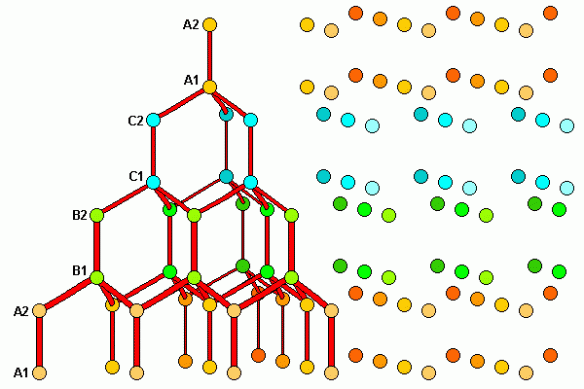Cubic ice – does it exist or not?
What does it look like?

The diamond-like arrangement of water in ice Ic. Image taken from https://www.uwgb.edu/dutchs/Petrology/Ice%20Structure.HTM
What is it?
We've already introduced you to some strange ice structures, but both ice VI and ice IX only exist under pretty special conditions. So this month's ice structure is the other form of solid water that has been proposed to form in our own world, cubic ice or ice Ic. This form of ice is thought to form in our atmosphere, from water droplets that are cooled very fast. Indeed it is often seen in protein crystallography experiments, where the protein is cooled fast to preserve it, and the water around it freezes.
Instead of forming the hexagonal arrangement of ice Ih, at these fast cooling speeds ice was though to form in a diamond-like arrangement, as pictured above. It was thought that the existence of this different form of ice explained the atmospheric phenomena known as 'Scheiner’s halo'. The idea is that this cubic form of ice could cause sunlight to refract by 28˚.
But ever since it was identified ice Ic has been in the centre of a scientific debate: does it really exist? Or is it a stacking fault in ice Ih? Latest results supports the latter conclusion, but it goes to show how little we still know about the simplest of substances, water.
Where did the structure come from?
The structure of ice Ic was first proposed by Mayer and Hallbrucker in 1987, but was first proposed as an explanation for 'Scheiner’s halo' by Whalley in 1981.






